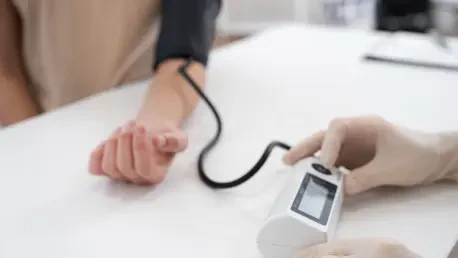Blood pressure technology is experiencing a significant surge in interest and innovation, with a complex debate regarding its classification as either a wellness device or a medical instrument. This conversation, sparked by a recent dispute between the FDA and wearable tech company Whoop, is emblematic of broader trends affecting the health tech market. Understanding the nuances of this debate is crucial for stakeholders in the wearable technology industry.
Contextualizing the Current Health Tech Landscape
The proliferation of wearable technology is reshaping how individuals monitor and manage their health. Devices once dedicated solely to tracking fitness activities now serve multiple health purposes, including monitoring vital signs like blood pressure. This evolution presents an intricate challenge: determining whether these wearables are wellness tools or should be classified as medical devices, subject to stricter regulations.
The core of the current debate involves the classification of Whoop’s blood pressure insights feature. The FDA contends that since blood pressure is a key indicator in diagnosing hypertension and related conditions, it falls within the jurisdiction of medical devices. In contrast, Whoop argues its feature adheres to the 21st Century Cures Act, which distinguishes health and fitness features designed to promote general wellness.
Examining Industry Trends and Market Dynamics
The debate over Whoop’s technology is not occurring in isolation—it’s part of a broader market dynamic concerning wearable health technology. As consumer demand for self-monitoring devices grows, the distinction between wellness products and medical devices becomes more critical. Industry players face mounting pressure to navigate complex regulations while meeting market demand for accurate data and user-friendly designs.
Recent advancements, such as FDA-approved cuffless monitors, exemplify a pathway for companies to align with regulatory standards while pushing technological boundaries. This trend suggests a potential market shift toward more sophisticated, yet accessible, consumer health monitoring devices.
Analyzing the Implications of Regulatory Discrepancies
Regulatory inconsistencies across regions further complicate the health tech landscape, affecting global market strategies. Companies must adapt their approaches to meet varying regulatory standards, influencing consumer perception and trust. The interplay between technological innovation and regulatory frameworks remains crucial, as it affects the ability of wearables to replace traditional medical devices.
For example, consumer confidence in these devices can wane if marketing claims are perceived as misleading, reinforcing the need for clear communication and education about their limitations. This underscores the significance of developing harmonized regulatory guidelines that accommodate innovation while maintaining public safety.
Strategic Considerations and Future Outlook
Aligning future strategies with evolving regulations is critical for companies in the health tech space. Stakeholders are encouraged to pursue clearer collaborations between tech firms and regulatory agencies, ensuring that innovative products can seamlessly enter the market. Industry leaders should advocate for updated guidelines that balance technological advances with consumer welfare.
The continued convergence of wellness and medical technology suggests a future where wearables become integral to healthcare delivery. By prioritizing collaboration and communication, the industry can support a transition to a more personalized health monitoring experience. Companies embracing these strategies stand to benefit in an increasingly competitive landscape, fostering a new era of preventative care and personalized medicine.









